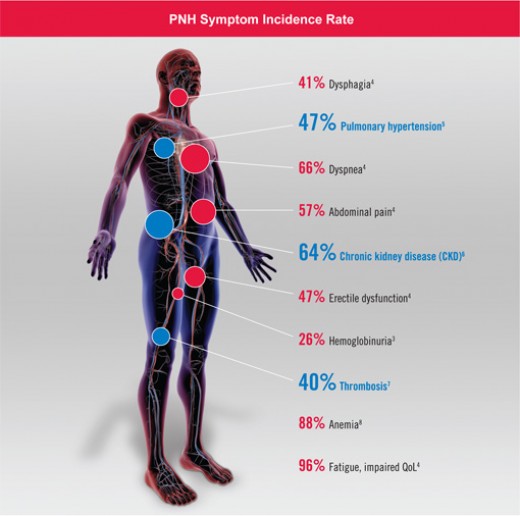Clinical Complications Of Systemic Hypertension
Chronic Manifestations
Chronic hypertension can have undesirable effect to the other areas of the physical body or other systems. Most the organs/systems most prone will be the” Heart often, nervous system, kidneys and retina.
Cardiovascular system
1. The left ventricle undergoes hypertrophy and dilatation and on cardiac failure sets in later.
2. Ischemic cardiovascular disease is more prevalent in them. This might present as angina pectoris, myocardial infarction or unexpected death.
3. Atherosclerosis is accelerated. Atherosclerosis of the aorta might trigger dissecting aneurysm. Atherosclerosis of the coronary, cerebral, peripheral and renal arteries lead with their intensifying occlusion.
Central anxious system
Strokes are among the most typical problems in hypertension. The lesion may be an ischemic infarct caused by thrombosis or a hemorrhage caused by rupture of the artery.

Hypertensive encephalopathy: It really is a particular complication observed in hypertensive patients when there is certainly fast rise of blood circulation pressure. The occurrence is higher in severe glomerulonephritis, pheochromocytoma and malignant hypertension. The cerebral arteries get into spasm in response to an instant rise in blood circulation pressure. Ischemia and edema of the mind develop. Clinically, it is seen as an intense headache, visible disturbances, convulsions, lack of awareness and varying levels of focal neurological deficits. Quick reduced amount of blood circulation pressure reverts the attacks and restores the standard state completely. This feature distinguishes hypertensive encephalopathy from cerebral hemorrhage or infarction where the neurological deficit persists.
Kidneys
Atheroma of the renal arteries leads to reduction of blood circulation to the kidney and progressive lack of renal function in malignant hypertension. Renal function rapidly deteriorates, finishing in renal failing.
Retina
The retinal arterioles undergo changes. These have been graded the following:
1. Quality 1: Arteriolar narrowing and upsurge in light reflex within the arterioles.
2. Quality 2: Marked arteriolar narrowing and arteriovenous nicking
3. Quality 3: Quality 2 + flame-shaped hemorrhages and fluffy (gentle) exudates.
4. Quality 4: Quality 3 + Papilledema.
The retinal changes give an indication of the progress of help and hypertension in identifying the prognosis. Levels 1 and 2 have emerged in the first stages of hypertension. Quality 3 is suggestive of the accelerated stage and quality 4 indicates changeover to the malignant stage.
Malignant and accelerated hypertension
If hypertension is permitted to improvement unchecked, many situations might go in to the malignant phase. Its exact system is not yet determined still. Supplementary hypertension occurring in renal pheochromocytoma and disease shows a larger tendency to advance to the malignant phase. It is seen as a further elevation of blood circulation pressure and quality 4 retinal changes.
Click to: 3M Littmann Cardiology III Stethoscope
At this continuing state, there is wide-spread fibroid necrosis of arterioles. Retinopathy might trigger visual impairment. The medical diagnosis of the malignant stage and the accelerated stage depends on the data of vascular harm in an individual with severe hypertension. Malignant hypertension is seen as a papilledema whereas accelerated hypertension shows only quality 4 retinopathy. After the malignant stage sets in, death occurs within two years as a total result of cardiac failure, renal failing or cerebral hemorrhage. Fast treatment arrests the malignant stage and its problems.
Prognosis
Hypertension leads to reduced amount of life expectancy and considerable morbidity also. Death is triggered by cardiac failing, cerebrovascular mishaps or renal failing. Reduction of blood pressure to normal levels reduces mortality and morbidity and boosts lifespan significantly. Hypertension is the most typical reason behind hemorrhagic and ischemic strokes in the middle-aged and seniors. Maintenance of lower blood circulation pressure levels reduces the chance of strokes considerably.